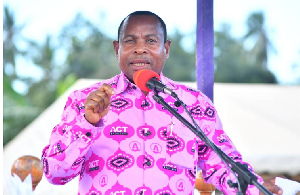A new research has revealed that only 21% of phone calls customers place to commercial banks in Ghana are answered.
On the other hand, 42% of all telephone calls customers place to their respective banks are not answered at all even though the calls connect.
Additionally, some 37% of all telephone calls customers place to their respective banks experience obstacles.
This means a whopping 79% of all telephone calls customers place to their respective banks experience hiccups such as no answer, answered by wrong persons and/or wrong branches, invalid telephone number (numbers that are more or less than 10 digits), ring and disconnects almost instantaneously, answered by answering machines that persistently fail to transfer calls, number does not exist, constantly busy, switched off or out of coverage area etc.
2 out of 10
The response rate suggests that prospective and existing clients that do not have direct access to relationship managers, bank staff or other reliable means of communicating directly with their branches , have only two out of 10 chances of getting through to their preferred branch using official telephone lines.
This situation may be actively contributing to excessive queuing in banking halls.
Significant percentage of calls that connect were ignored
According to the report to be launched this Tuesday, apart from some of the technical challenges that can clearly be attributed to poor services form telephone service providers, a significant percentage of calls that connect were ignored.
The banking institution with the highest response rate scored 53%, the report said.
The Banking Industry Telephone Efficiency Index dubbed ‘The Bite Index’ survey was designed and implemented by Walsbridge, an independent market research and business intelligence firm, to provide sound data to measure and benchmark corporate telephone practices in the banking industry.
It is to provide insights to help other organisations to significantly improve corporate telephone handling skills to match international best practices.
211 branches of 23 commercial banks surveyed
Using telephone mystery shopping technique, quantitative data was collected over a seven-month period from 211 branches selected from 23 commercial banks.
Categories investigated
The main categories that were investigated were; response rate, telephone handling etiquette, product and service presentation, pricing information consistency, overall BITE.
Other portals for information exchange
The research acknowledges other portals for service and information acquisition such as websites, and other e-banking platforms.
These portals provide alternative access to existing and prospective clients to access products and service as far as permissible.
Even though the research did not explain why, it listed one or more of theories – ranging from Indifference to Obsolete Service Protocols - that may apply.
Indifference
There are situations where members of staff become comfortable ignoring inbound calls simply because they can do so without any consequences.
Lack of effective monitoring system
Without effective monitoring system, it is nearly impossible for organisations to know how bad the situation is or how many times prospective customers have to try to get through to their preferred branches on phone.
Lack of dedicated staff to inbound calls
Most of the time simple problems require simple solutions. When a phone rings somebody must answer it. Not because he/she has nothing else to do but because it is his/her responsibility to do so. Many organisations treat inbound calls as secondary and, therefore, do not have dedicated staff to attend to them.
Obsolete service protocols
Phone calls may not be answered because client service executives are busy attending to walk-in clients and many institutions have standard protocols that indicate that walk-in clients take precedence over phone-in clients.
This is evident in the results of this survey where 16% of surveyed branches informed the research team that they were busy attending to walk-in clients and therefore the caller should call back later or come to the banking hall for the information.
There’s no justifiable reason why clients accessing information via telephone should compete with walk-in clients.
In addition to the response rate, the research also benchmarked best practices and challenges regarding telephone etiquette (including call transfer and holds), Product & Service Presentation, Pricing Information Consistency, the overall BITE INDEX.
The research findings have significance beyond the banking industry; to the extent that the index could be indicative of the prevailing service and professional standards in the country.
Business News of Friday, 7 April 2017
Source: thefinderonline.com













